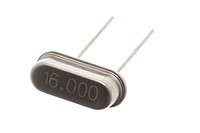
Photo from wikipedia
Non-contact optical thermometer based on luminescence intensity ratio (LIR) of two thermally coupled energy levels, exhibiting high sensitivity, excellent accuracy, fast response and low environment dependence, has attracted great interests… Click to show full abstract
Non-contact optical thermometer based on luminescence intensity ratio (LIR) of two thermally coupled energy levels, exhibiting high sensitivity, excellent accuracy, fast response and low environment dependence, has attracted great interests in scientific research, life activities, and industrial manufacturing processes. However, the use of optical thermometer in extreme atmospheres (below 150K) is usually limited by the required large temperature activation due to the relatively big energy difference (200 cm-1≤ΔE≤2000 cm-1). Here, we propose a strategy to alleviate the ultra-low temperature sensing problem by exploiting and utilizing the near-infrared (NIR) thermally coupled Stark sublevels of Tm3+ (3H4|0→3H6/3H4|1→3H6, ΔE≈300 cm-1) that is much sensitive to minimal temperature variation especially at ultra-low temperature due to the tiny energy difference. The integration of ultra-low-temperature sensitive Tm3+ ions and room-temperature sensitive Er3+ ions in an ultra-small α-NaYbF4:Tm3+@CaF2@NaYF4:Yb3+/Er3+@CaF2 core/multi-shell nanoparticle (~15 nm) as dual-mode upconverting luminescent nanoprobe enables the broad-range temperature detection from 10K to 295K. This structure induces ~14 times NIR emission and ~6-fold green UC luminescence output in comparison with α-NaYbF4:Tm3+ core and α-NaYbF4:Tm3+@CaF2@NaYF4:Yb3+/Er3+ core/shell/shell nanoparticles. The maximum absolute and relative sensitivities of dual-mode temperature sensor reach 0.67% K-1 and 3.06% K-1, respectively, showing the advantage of the concurrent utilization of Tm3+ NIR 801/820 nm band ratio and the typically Er3+ visible 521/538 nm band ratio for wide range temperature sensing purpose. This work provides a promising strategy to develop accurate and effective, contactless broad-range/ultra-low temperature sensors.
Journal Title: ACS applied materials & interfaces
Year Published: 2019
Link to full text (if available)
Share on Social Media: Sign Up to like & get
recommendations!